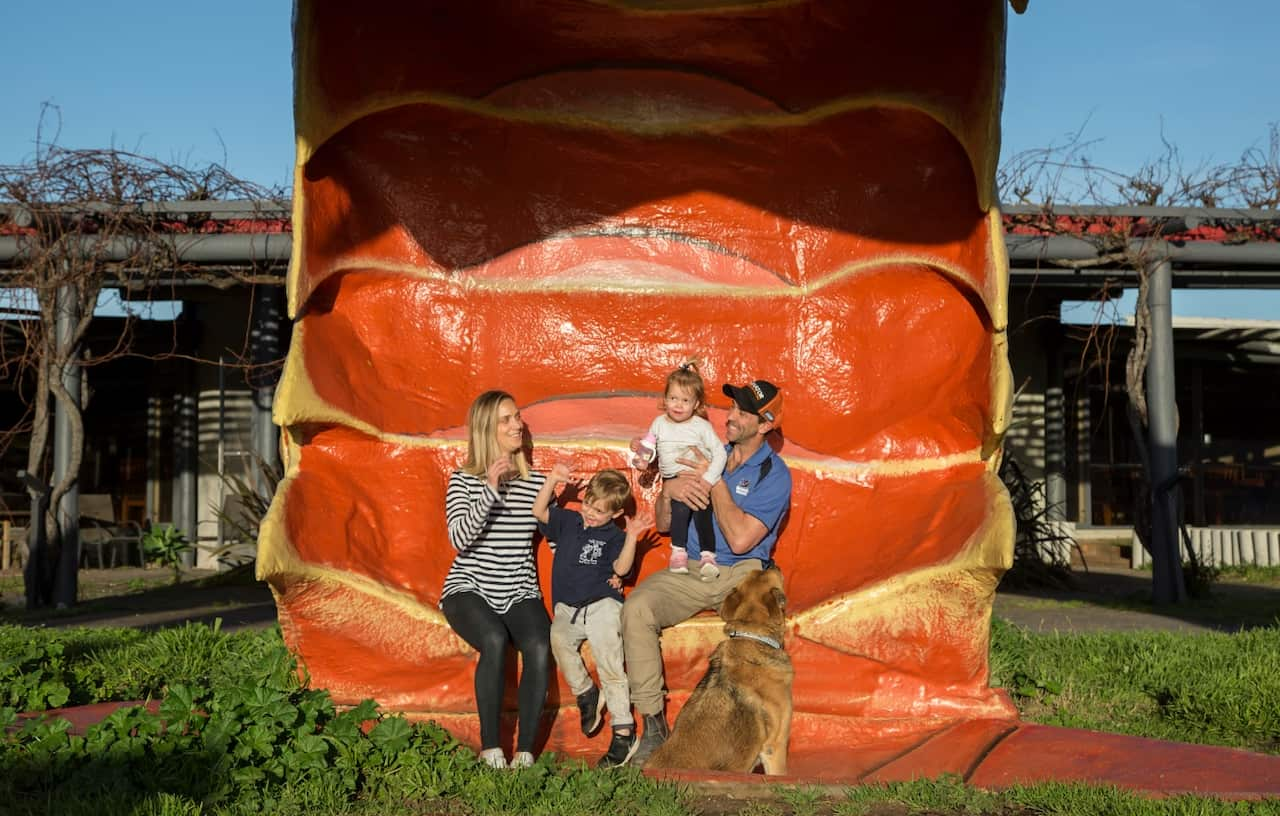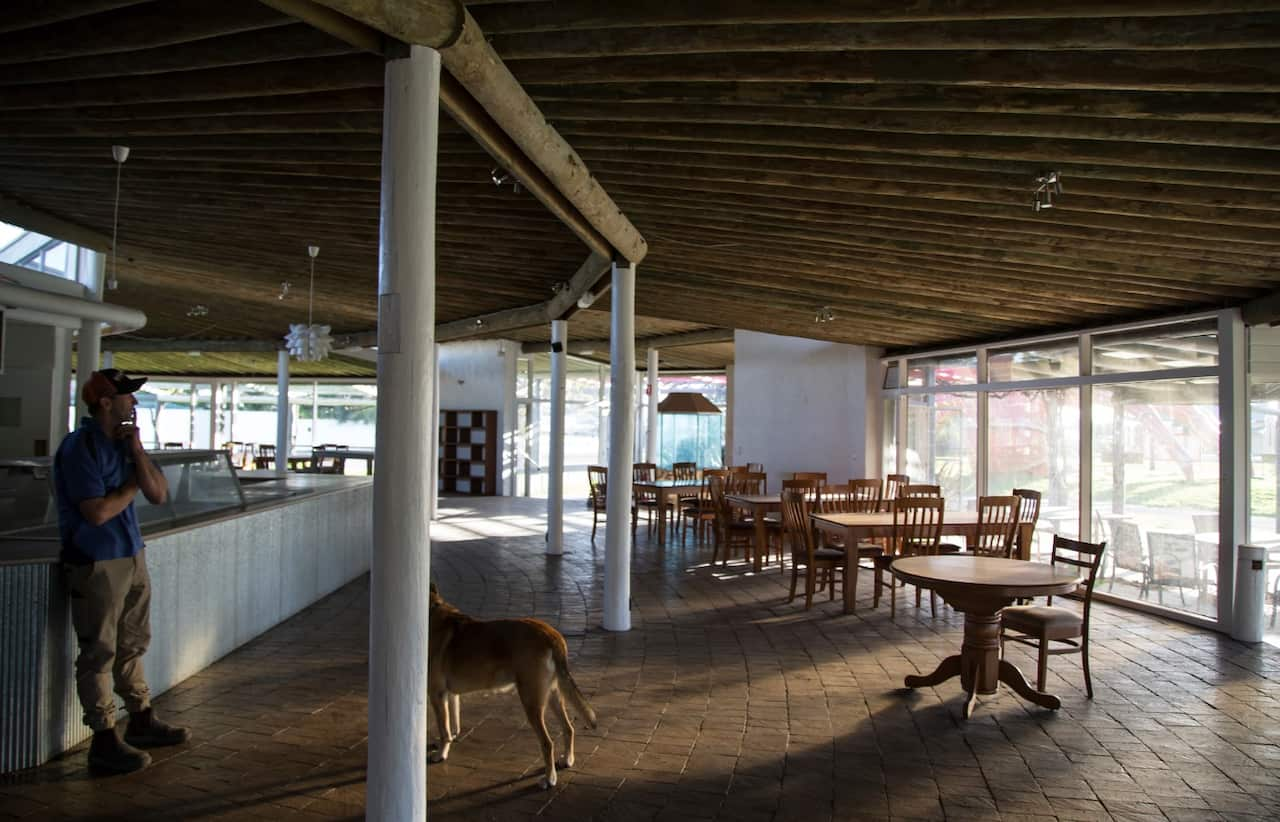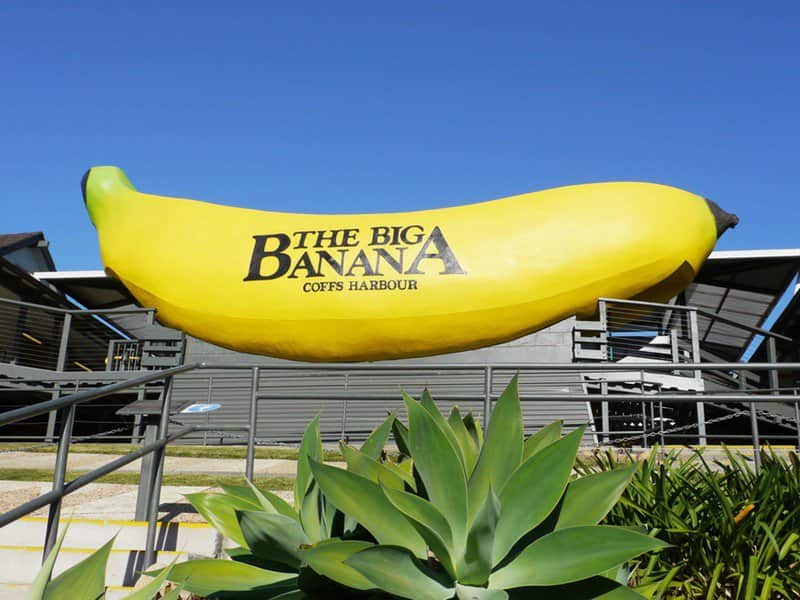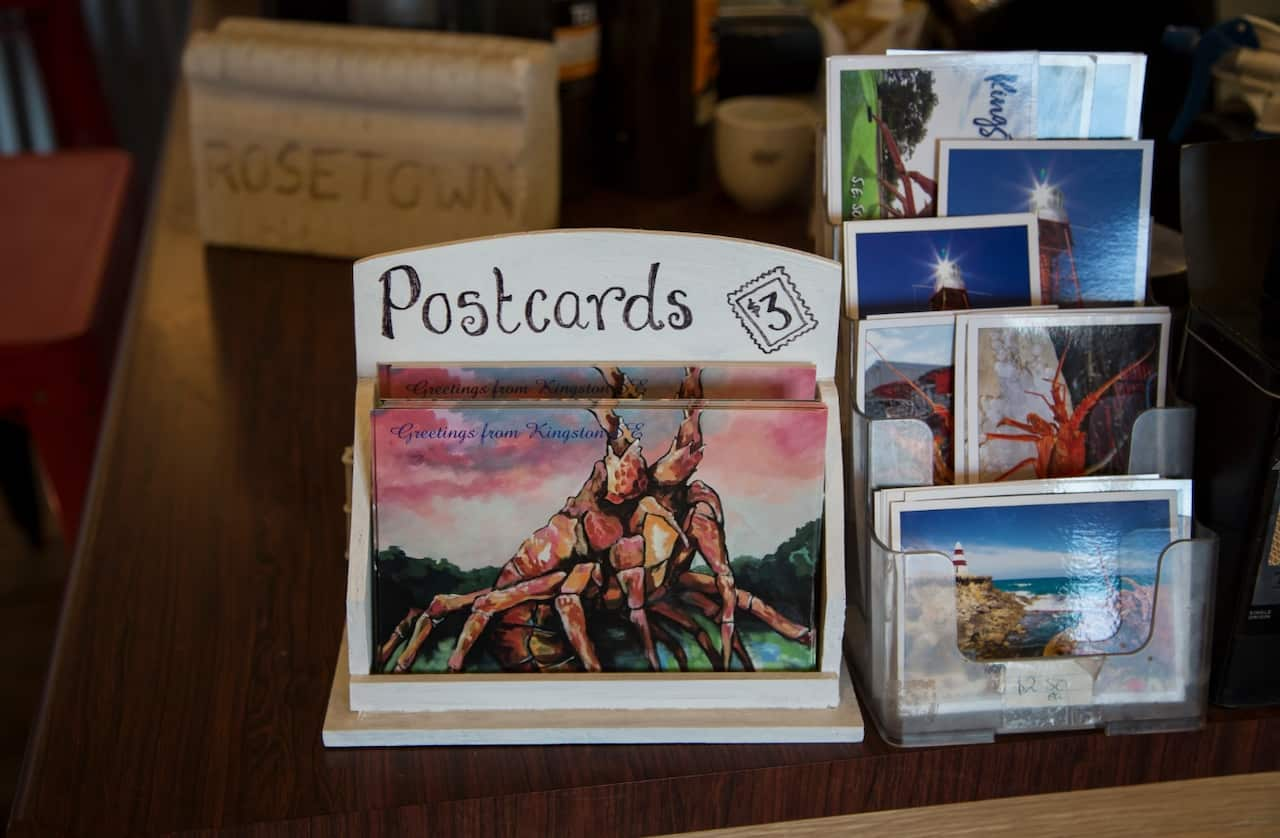On a grassy patch of land beside the Princes Highway, Casey Sharpe sighed as he looked up at his most prized and problematic possession: a 16m tall spiny lobster.
His name is Larry. And his future is uncertain.
The crowds Sharpe imagined when he bought Larry, known as The Big Lobster, 11 years ago never materialised. The business behind Larry’s tail closed two years ago.
Now, a tempting offer has arrived that would cut Sharpe’s losses and take Larry off his hands.
The catch? Larry would be shipped thousands of miles away to Western Australia. And if Larry leaves, neighbours will not be happy.
“My name will be mud,” Sharpe said. “I might have to move towns.” His deadline for the local council — or someone else — to save the lobster is next Monday. Larry is one of Australia’s “Big Things,” the very literal name for the oversize objects sprinkled across this vast country. Some are tributes to a local industry (the Big Banana).
Larry is one of Australia’s “Big Things,” the very literal name for the oversize objects sprinkled across this vast country. Some are tributes to a local industry (the Big Banana).

Casey Sharpe, seated at right, with his family in The Big Lobster’s tail in Kingston South East, Australia, Aug. 1, 2018. Source: The New York Times
Others are tributes to national passions (the Big Beer Can). And for those driving Australia’s long freeways, the landmarks provide a place to stretch the legs, with the added bonus of a photo opportunity.
For 39 years, the sight of Larry’s faded red carapace has welcomed road trippers travelling through the quiet seaside farmland of an area known as the Limestone Coast.
He sits at the entrance of Kingston Southeast, population 1,400, where fishing and farming are the town’s lifeblood and tourism thrives in the summer.
The thought of Kingston without Larry is unthinkable.
“I think there’d be a revolution,” said Jeff Pinkerton, 55, a local butcher.
Uncle Rob, an artist with a gallery on the main street, did not mince words. “Without that lobster, Kingston dies,” he said.
Not all Big Things inspire such loyalty. Many of the roughly 350 giant objects in Australia — as tallied by Amy Clarke, a historian with the University of the Sunshine Coast who works near the Big Pineapple — are just ostentatious landmarks.
But some Big Things are a bigger deal. Underneath their garish peels, shells and skins lies evidence of a deep-rooted Australian trait, in which humour masks an enduring commitment to community spirit. The Big Things are funny but not pretentious: They are a joke everyone’s in on.
The Big Things are funny but not pretentious: They are a joke everyone’s in on.

Casey Sharpe and his dog, Max, in the closed restaurant behind The Big Lobster, in Kingston South East, Australia, Aug. 1, 2018. Source: The New York Times
Most of the country’s Big Things were erected around the 1980s. They are often deeply entwined with the identity of a community, and reflect a local passion or industry.
Many Australians admire them, Clarke said, because the Big Things represent “a much less complicated national identity” than the one Australians grapple with in this era of political tumult and battles over immigration, race and gender.
But like Larry, many of Australia’s oldest Big Things are aging or facing the prospect of demolition. Some towns have rallied to preserve them, while new ones pop up.
Big Things come, apparently, with big feelings. Larry is no exception. Ian Backler, the man who dreamed him up, was inspired by an impressive small-town attraction he saw during a 1970s vacation in the United States, which proudly showcased regional produce.
Larry is no exception. Ian Backler, the man who dreamed him up, was inspired by an impressive small-town attraction he saw during a 1970s vacation in the United States, which proudly showcased regional produce.

The Big Banana is seen in Coffs Harbour Source: The Big Banana
When he returned to Kingston, Backler, a lobster fisherman, wanted to bring that same magic and pride to the town he loved, which he hoped might draw tourists to his seafood restaurant.
He enlisted Paul Kelly, an artist (not related to the singer of the same name) known for building the Big Scotsman in Adelaide, to create a lobster big enough to attract passing tourists.
The process involved Kelly’s carefully measuring a real spiny lobster in inches, before converting it into feet, then bolting the structure’s 22 pieces together in midair. It took about six months.
But from his inception, Larry caused heartbreak.
A disagreement over costs took the two men to court. Kelly, now 89, lost the case, which ultimately bankrupted him.
“I loved making it,” he said in an interview. “It was just a nightmare toward the end.”
But with Larry as the star, Backler’s restaurant thrived. Tourists arrived by the busload. “We had them queued up through the front door on occasion,” he recalled.
Since then, affordable plane travel has meant fewer busloads of people. In 2016, after a series of lessees, the site effectively closed, though some drama persisted.
A few years ago, an engineer determined that Larry needed restoration. The site’s last lessee, Frances Curkpatrick, began a fundraising campaign, which garnered national attention.
A popular radio show, Hamish and Andy, pitched in — before betting and losing the donation on a horse race.
The local effort stalled, too, when disagreements between Sharpe and Curkpatrick over the restoration led to most of the money being returned to donors.
“I’m just very sad,” said Curkpatrick, who rented the lobster and its surroundings to sell honey and honey byproducts from 2014 to 2016.
“There was so much slander, and in a small community we have to stick together.” Sharpe said he had put 35,000 Australian dollars (about $25,600) of his own money toward Larry’s makeover. He doesn’t really want to sell the lobster to a stranger out of state.
Sharpe said he had put 35,000 Australian dollars (about $25,600) of his own money toward Larry’s makeover. He doesn’t really want to sell the lobster to a stranger out of state.

Postcards of Larry, known as The Big Lobster, at Robe Bakery Rosetown, a nearby cafe and bakery around the corner from the landmark Source: The New York Times
“This should be a mecca tourism centre for the Limestone Coast and beyond,” he said.
But with two young children? “Enough is enough,” he said.
The A$300,000 he is asking — for the restaurant, the lobster and the land — will not cover his family’s debt, he said.
Which is why an offer to send Larry west — selling just the lobster for about a third of the whole site’s price — is so attractive. It is not a light decision. After all, relocation might impact Larry’s legacy.
According to Clarke, moving items from their original locations severely diminishes their chances at a heritage listing.
Sharpe is hoping the government can help by Monday’s deadline. A few years ago, the local council offered to move Larry to somewhere more likely to attract tourists to the town’s centre, but the deal fell through.
With streets to revamp, a coastline to restore and roads to repair, the lobster is not a top concern.
“The community would be frowning upon council if it even put Larry as a priority anywhere at the moment,” said Andrew MacDonald, the council’s chief executive.
Perhaps, then, it is up to someone with a vision for how to turn the business around. In the summer, Kingston’s population more than doubles.
The parking lot beside Larry bustles with admirers. Even in the winter, this Big Thing pulls in fans.
Joris Meuwese and Rachael McCabe, two European travellers in their twenties, giggled as they snapped photos during a recent afternoon visit.
The Barood family, on a vacation from New Zealand, were drowsy from driving before they awoke to the sight of the crustacean.
And Matthew Ryder, an Adelaide Hills native, brought his 9-year-old daughter, Kate, to see the same lobster he had seen himself as a child.
She looked wide-eyed as it towered over her, a broke but beautiful lobster that had weathered storms and bankrupted people and fractured friendships.
“I think it’s just as great as I imagined it,” she said.
Share

